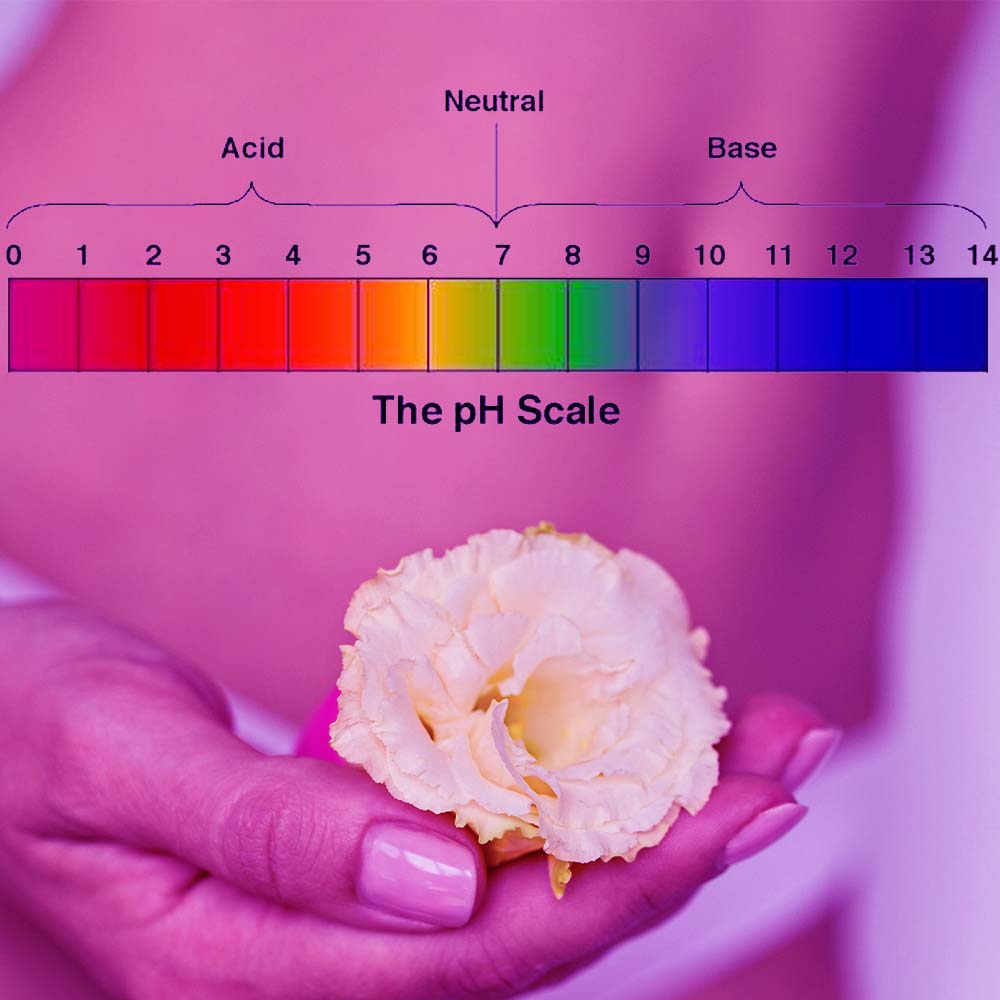Unless you are trying to conceive a baby, semen should not be in your vagina. Semen is alkaline which can throw your PH level off and transmute other diseases.
Alkaline or acidic? Which should your vagina be?
Alkaline or acidic? When you think of these two words, you may think of pH balance and yeast infections. Or maybe you think about food. Well, let’s talk about vaginas. We all should know the ph level of our vaginas. You may not know exactly where it is, but you should have an idea.
What is the vaginal pH, and what is a healthy range?
Your vaginal pH measures how acidic or alkaline your vagina is. When your pH is out of whack, you are more prone to yeast infections, bacterial vaginosis, and possibly sexually transmitted diseases if the mucosal layer( a thin layer of protective mucus in the vagina) of the vagina gets weak.
What is a healthy vaginal pH balance?
A healthy vaginal pH is between 3.8-4.5. Depending on what stage of life we are at depends on the acidity level of our vagina.
While in your reproductive years (ages 15 to 49), your vaginal pH should be below or equal to 4.5. But before menstruation and after menopause, a healthy pH tends to be higher than 4.5.
How to tell if your vaginal is out of balance
When your pH is out of balance, you will notice a change in discharge, typically color and texture( cottage cheese-like), and possibly an odor. In addition, you may experience itching and possible burning, and discomfort around the vulva.
What can cause PH imbalance?
- Semen Unless you are trying to conceive a baby, semen should not be in your vagina. Semen is alkaline which can throw your PH level off and transmute other diseases.
- Your period, Like semen, blood is alkaline. So naturally, your period can cause a minor disturbance. Your vagina is good at self-correcting, but some of the products you use for period protection can disturb that process. For example, tampons contain harsh chemicals that can disrupt your hormones and irritate your vagina. Some of these chemicals come from the bleaching process, used by many manufacturers to give tampons a solid white appearance. The chemicals used in that process disrupt the vaginal pH levels (not to mention causing reproductive toxicity and endocrine disruption), leaving you with an imbalanced vaginal PH. To decrease any chance of disrupting your vagina, try switching to menstrual cups, period underwear, reusable pads, and 100% cotton tampons and pads.
- Stress The stress hormone cortisol lowers your immune system, making it harder for your body to fight off harmful bacteria leading to BV and yeast infections.
- Douching removes healthy bacteria from your vagina, which will allow the overgrowth of harmful bacteria, resulting in BV(bacterial vaginosis or yeast infections. The more you introduce douching to your vagina, the more recurring these can be.
- Vaginal Hygiene Practicing good personal hygiene plays a significant role in keeping your vaginal pH balanced. In addition to your regular hygiene practices, making sure you regularly change out your period care products like pads, liners, and tampons is essential in preventing the growth of harmful bacteria. If you use a menstrual cup, cleaning between uses will also help ensure you don’t introduce harmful bacteria that could disturb your vagina’s natural bacteria.
- Birth Control Birth control affects your hormones. It can also affect your vaginal ph causing recurring yeast infections.
- Antibiotics, Along with other medications, can significantly affect your vaginal pH, specifically your digestive tract and your vaginal bacteria.
- Pregnancy and childbirth Pregnancy and childbirth can affect your vagina pH. Pregnancy alters your hormone levels and puts a lot of pressure on your body to grow your baby, while delivery can cause physical differences to your vagina. Both pregnancy and childbirth can also influence your vaginal flora.
How to balance your PH level?
- Garlic tablet daily or garlic oil rubbed inside the vagina.
- No Douching
- No scented soap
- Cotton underwear
- Probiotics- increasing your “good” bacteria (lactobacilli)
- Decrease sugars and carbs
- Increase water with a higher PH
Herbs that can help balance vaginal ph
- Cloves
- Cinnamon
- Sage
- Oregano
- Garlic
- Rosemary
- Basil
- Thyme

